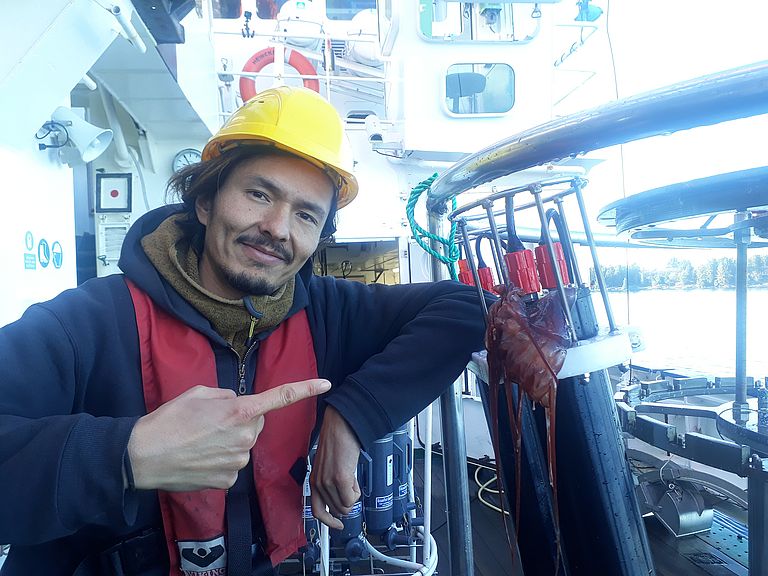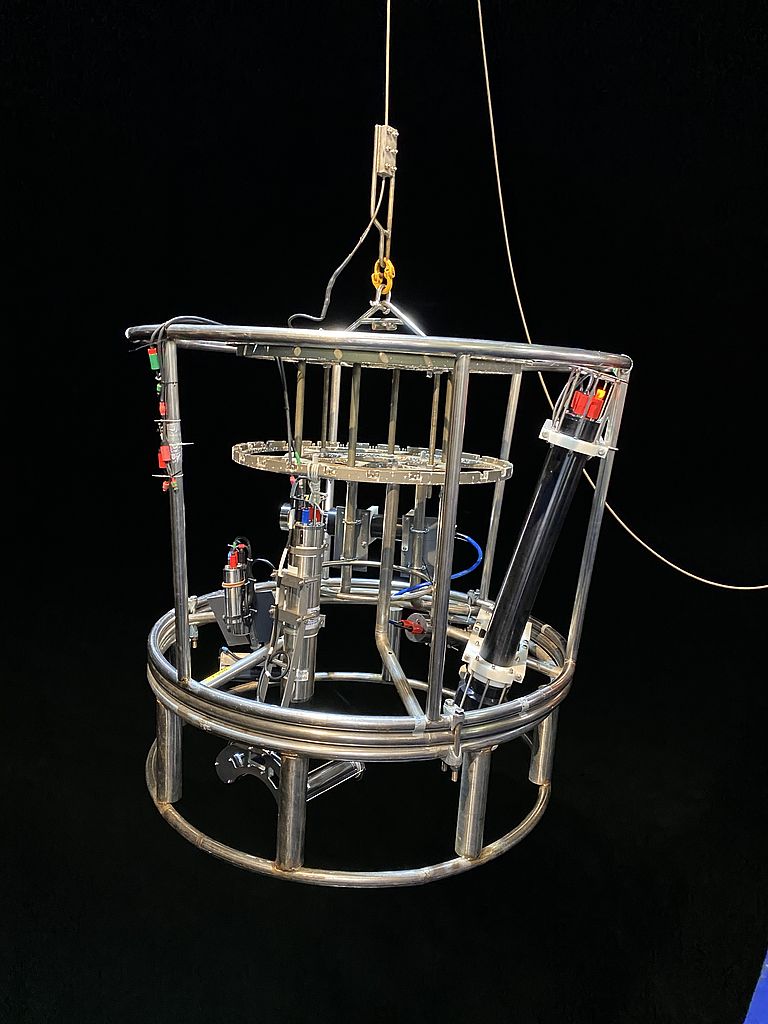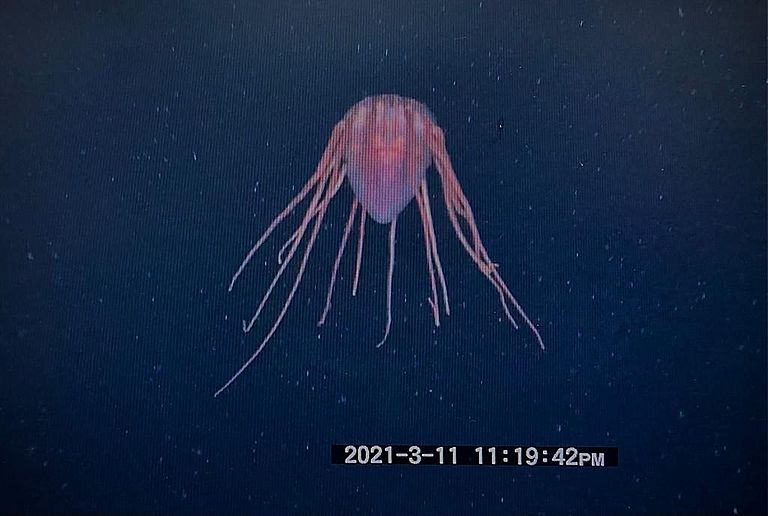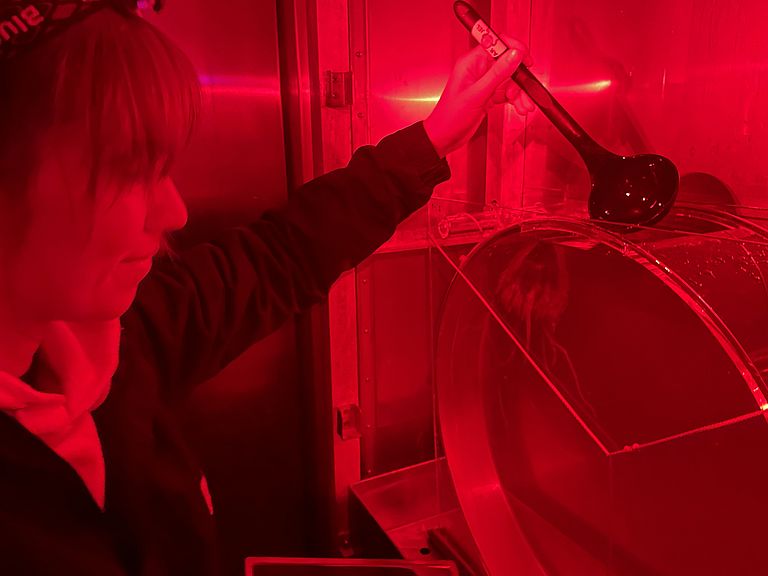Expedition #FjordExport
A research expedition despite Corona
“Not only the scientific success of this trip justifies the effort, but also the inspiring enthusiasm and the cooperation are a great motivation after many rather lonely months in the home office.” (Helena Hauss)
On March 2, 2021, the research vessel Heincke left Bremerhaven with destination Norway. Before the start of any expedition, there are many months of work and preparation to ensure that all necessary equipment, all permits and all participants come on board. Due to the Corona pandemic, many sea-going GEOMAR research cruises had to be cancelled. Expedition HE570 got a go-ahead and will return to Bremerhaven tomorrow. The expedition leader team Helena Hauss (GEOMAR) and Klas Ove Möller (HZG) answer a few questions about leading an expedition in times of a pandemic.
What are you investigating during the expedition?
We are studying the transport of Carbon to the deep sea, with special focus on the role of zooplankton and fish. As a model or natural “mesocosms” we are using two fjords in Norway that have very different food webs – one, the Masfjord, is home to lanternfish and luminous sardines. In the other one, the Lurefjord, the place has been occupied by the helmet jellyfish Periphylla periphylla.
At the same time, these fjords are ideal for comparing different camera systems used at AWI, HZG and GEOMAR, as well as at CNRS in France, and harmonizing the data obtained from them. They allow deep-sea research under very calm working conditions, which facilitates this technical aspect of our cruise. We use camera-based observations complemented by e.g. sediment traps and net catches as well as hydroacoustic measurements to assess the influence of zooplankton on the so-called biological carbon pump, i.e. how sinking particles and zooplankton interact with each other.Why is it important to continue going on expeditions during this special time?
A complete standstill of seagoing research would be fatal for our observation-based work and projects. Especially for the younger scientists working on projects, these data are of enormous importance, as they form the basis for their PhD theses that were just started.
For us, scientific exchange on board and working on a research question together is also an important part of the scientific learning process. Our recently founded Helmholtz-wide working group PIC (Pelagic Imaging Consortium) had been meeting from time to time for exchange and there were already collaborations of individual members, but this was the first joint expedition of almost the entire group.Did the more difficult circumstances change the region you were planning to explore?
No, we had our sights set on these two fjords right from the start and had also planned the Bremerhaven-Bremerhaven trip from the very beginning. Of course, this has now made it easier for us to carry out the trip under Corona regulations. To be honest, the choice of the Lurefjord turned out to be a double luck: a land-based expedition with the submersible JAGO in the framework of the iAtlantic project on the influence of sediment clouds caused by deep-sea mineral degradation on pelagic (i.e. swimming in open water) organisms could unfortunately not take place this year due to corona – but we could now already carry out experiments with Periphylla for this very purpose. Vanessa Stenvers, who is starting her PhD thesis in this project, was able to join us at short notice. By the way, here again a big thank you to the Heincke crew who, shortly before submitting our application, quickly measured whether the ship with all antennas really fits under the bridge into the Lurefjord (at low water just barely – with less than a meter of space).What extra time and effort did you have due to the special circumstances of a pandemic?
What did that involve in terms of planning, preparing the equipment, etc.?
It was honestly rather a madness. Due to the constantly changing Corona-related restrictions, the participation of our international cruise participants in particular (by the way, we have six nationalities on board among eleven scientists!) was in jeopardy until the very end. Unfortunately, one participant could not come along. In addition, continuous communication between the ship coordination, the shipping company and the responsible health authorities was necessary in order to react to the situation and to guarantee a successful operation.
Packing was also particularly challenging due to limited access to the institutes and also required some sending of equipment back and forth for preparation. In addition, there were also higher logistics costs due to the unavailability of the institutes’ transportation services due to the ban on official travel. The costs for the necessary quarantine in a hotel as well as the two PCR tests were kindly covered by the AWI ship coordination.Was there a special moment during your expedition?
Already the impressive mountain scenery and the silence in the fjord in contrast to the hundreds of meters of water column below the ship remain in memory, especially when you are used to have only the blue ocean around you. And everyone was excited to discover the first Periphylla on the pictures of their respective cameras. The jellyfish kept in circular tanks on board captivated everyone especially with their bioluminescence!Interview: Sarah Kaehlert
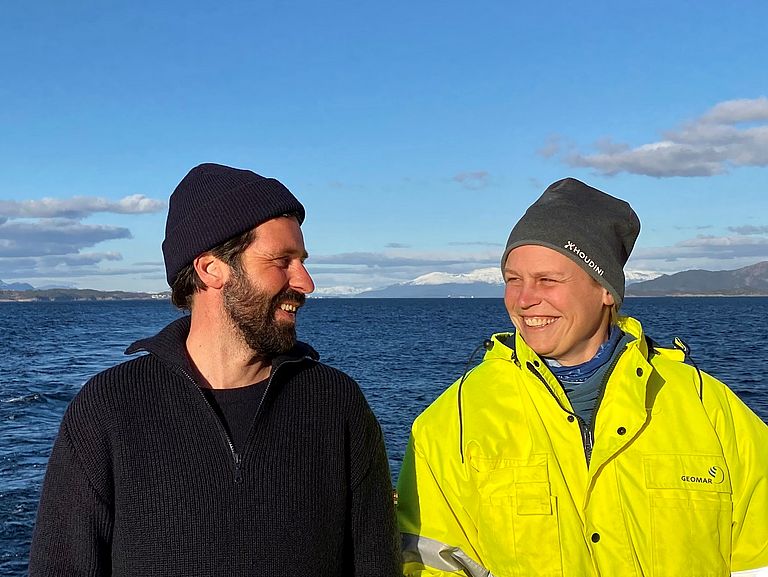
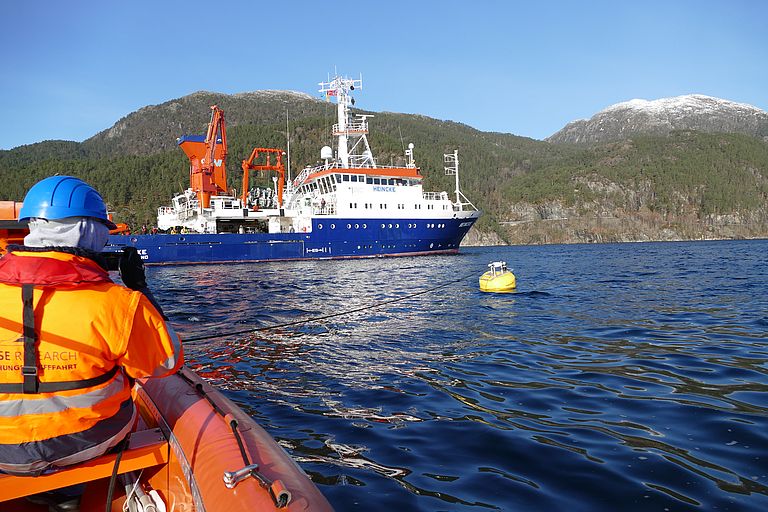
![[Translate to English:] Deployment of a sediment trap with attached Underwater Vision Profiler (UVP6) und Simrad WBAT. Photo: Helena Hauss](/fileadmin/_processed_/3/2/csm_3_Helena_Hauss_UVP6andWBAT_902be29519.jpg)
